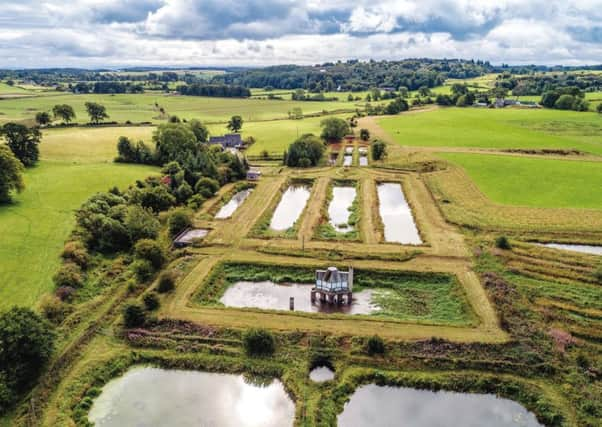Commercial property: Chance to own a slice of aquaculture history


Howietoun Fishery in Stirlingshire dates back to the 19th century and sits in 27 acres of grounds. It is regarded as the birthplace of scientific aquaculture and located four miles from Stirling in Sauchiemill.
The fishery is being sold by Stirling University, which ran it as part of its aquaculture department from 1979 until just a few years ago.
Advertisement
Hide AdAdvertisement
Hide AdIncluded in the sale is a B-listedformer grain mill, cottages, four A-listed outbuildings and three similar unlisted structures.
The grain mill is a stone-build with slate roof and retains its original internal layout with an upper-mezzanine floor accessed by a timber staircase.
The A-listed buildings include the former mincing, dispatch, hatching and summer houses, all of which have the potential to be restored.
Established in the 1880s by Scottish landowner and aquaculture pioneer James Maitland, who broke new ground in fish-farming techniques and research into the artificial breeding of fish, Howietoun Fishery set the standards for modern fish farming.
At the time of international declines in fishery stocks, Maitland’s establishment worked to restock impoverished fisheries and was the first to sell its produce nationally on the open market.
Carl Warden at Bell Ingram, sale agent, says: “Howietoun Fishery has exceptional character and is truly unique in its design.
“Its land and buildings offer an exceptional development opportunity. If bought by somebody eager for a project, and with the right vision, it could be restored to something really quite remarkable – it’s a very exciting prospect.”
The A-listed zone includes the original ponds and the spectacular – but dilapidated – summer house, which is built on stilts in the middle of one of the ponds.
Advertisement
Hide AdAdvertisement
Hide AdThe building originally served as Maitland’s office, where the aquaculturist would row out to do his paperwork while using the part-glazed floor to observe salmon swimming below.
The railings surrounding the original ponds are also A-listed but outside the central area there are further buildings, including the B-listed mill house and three unlisted cottages.
Warden says that these represent a development opportunity, perhaps as residential conversions. “They aren’t derelict, but they need total renovation.”
He says that interest so far has come from developers, who see an opportunity to restore the whole site as a commercial fishery, and also from the local community who may be interested in taking on the historic buildings and ponds with a view to transforming them into a visitor attraction.
Warden adds: “They are very keen to marry up with a potential buyer for the other parts, so a developer could come in and work with them.
“It will be very interesting to see which direction a new owner will take it.”
In terms of price, Warden says that Howietoun Fishery has been difficult to value, mainly because there are few comparable properties.
“You can place a value on the individual buildings and we are used to setting a price per acre of land.
“But when the land includes listed ponds, which can’t be changed or filled in, that makes it much more complicated.”
Nevertheless, a price of offers over £225,000 has been set.